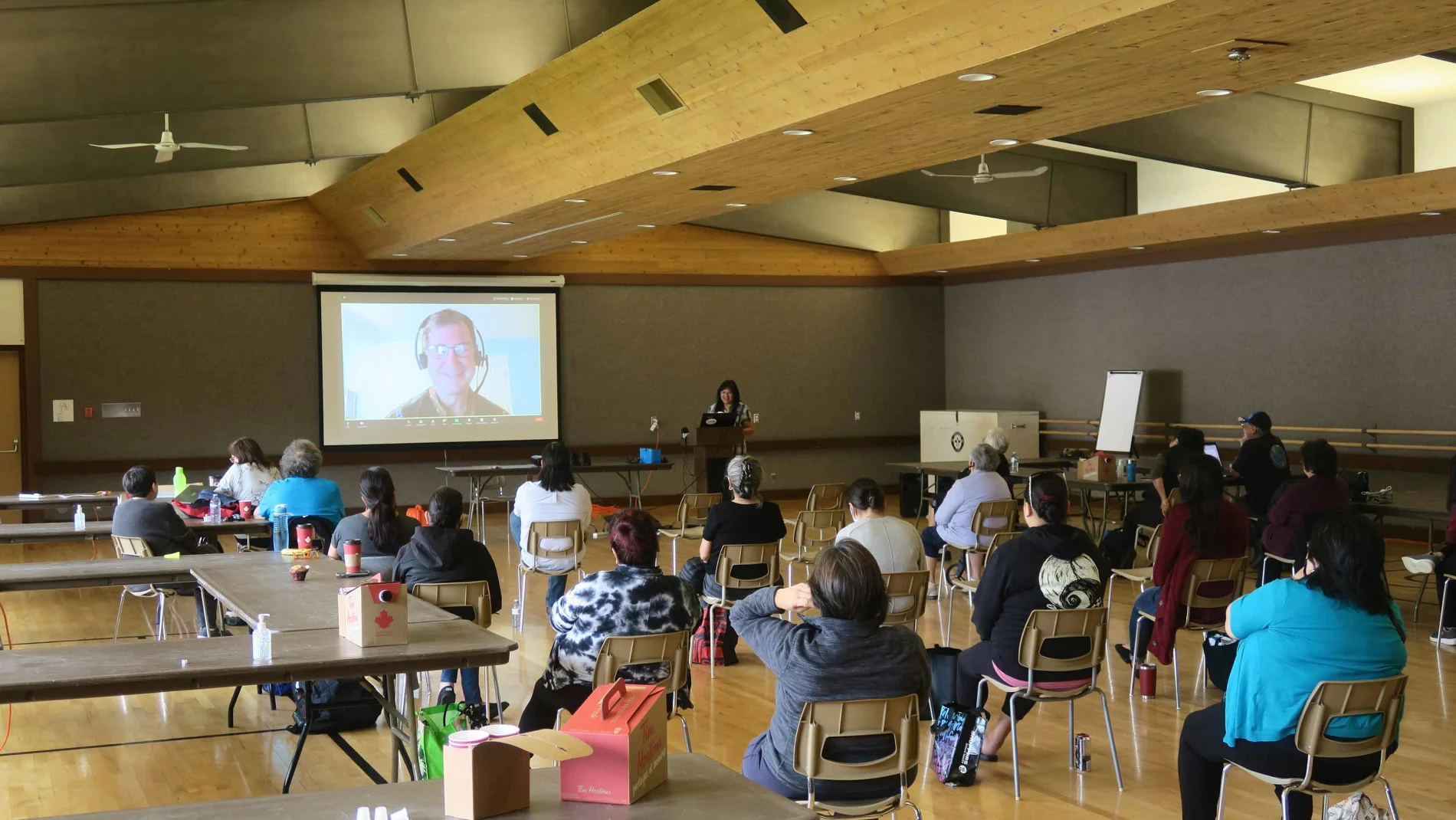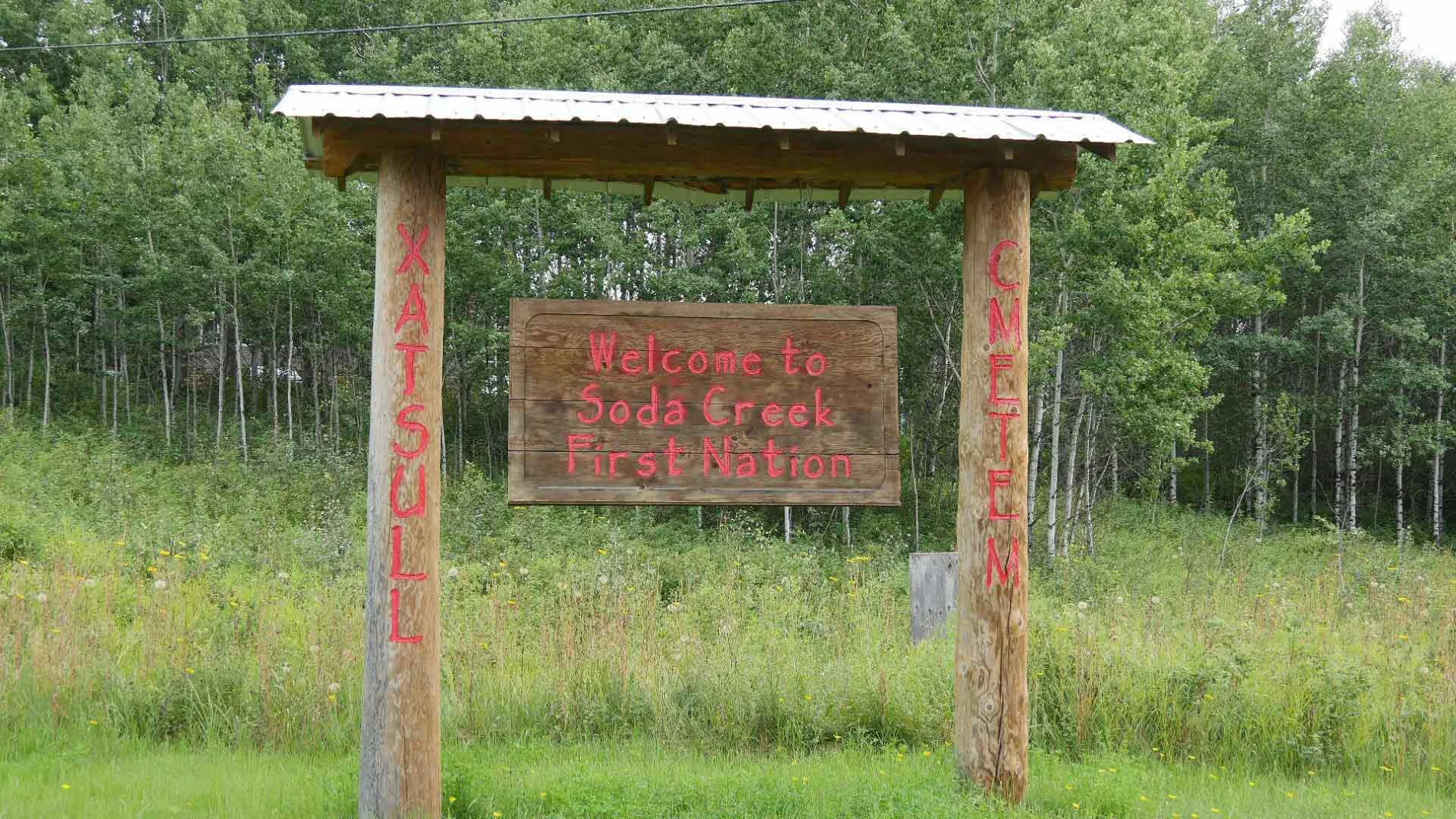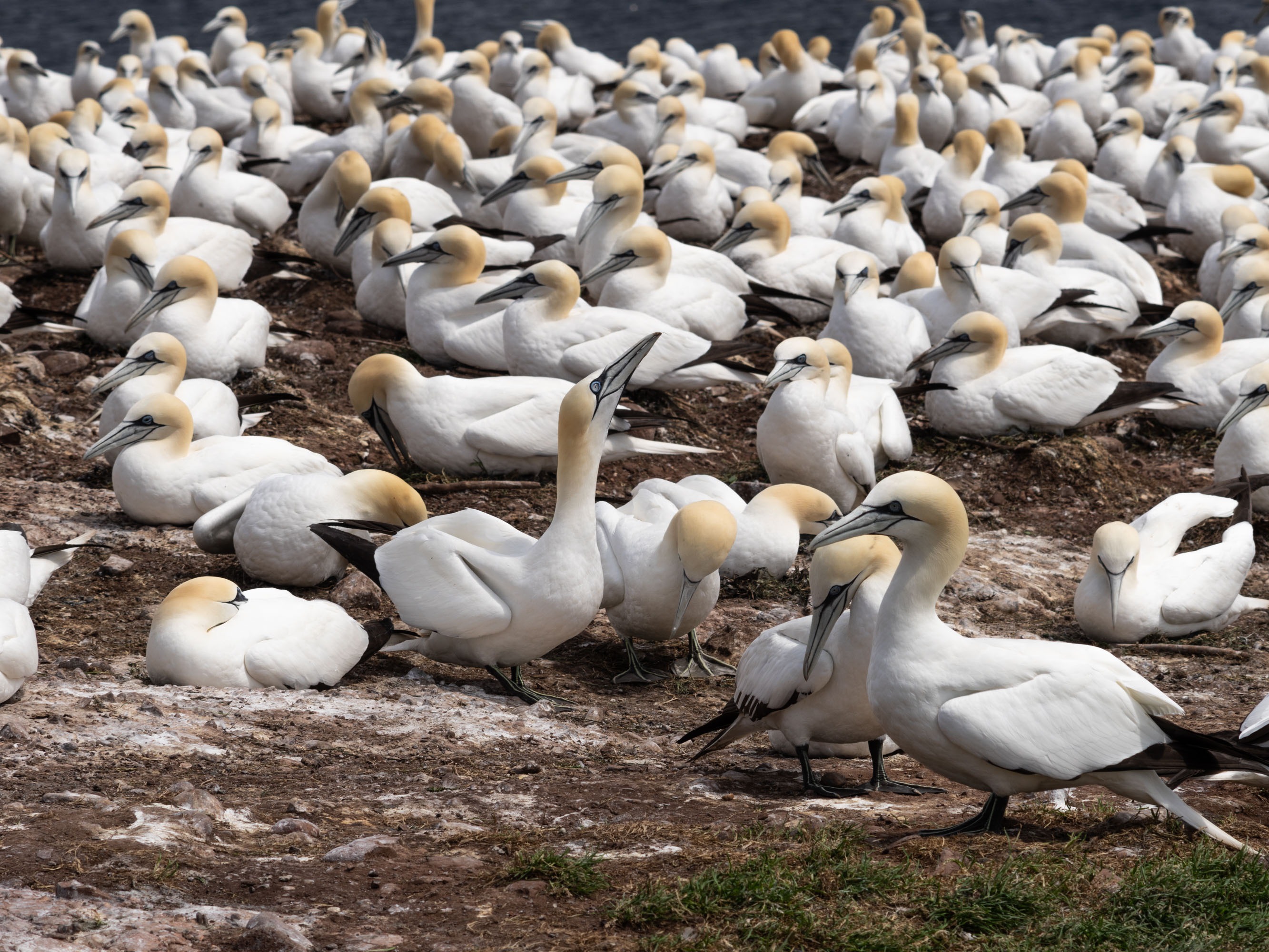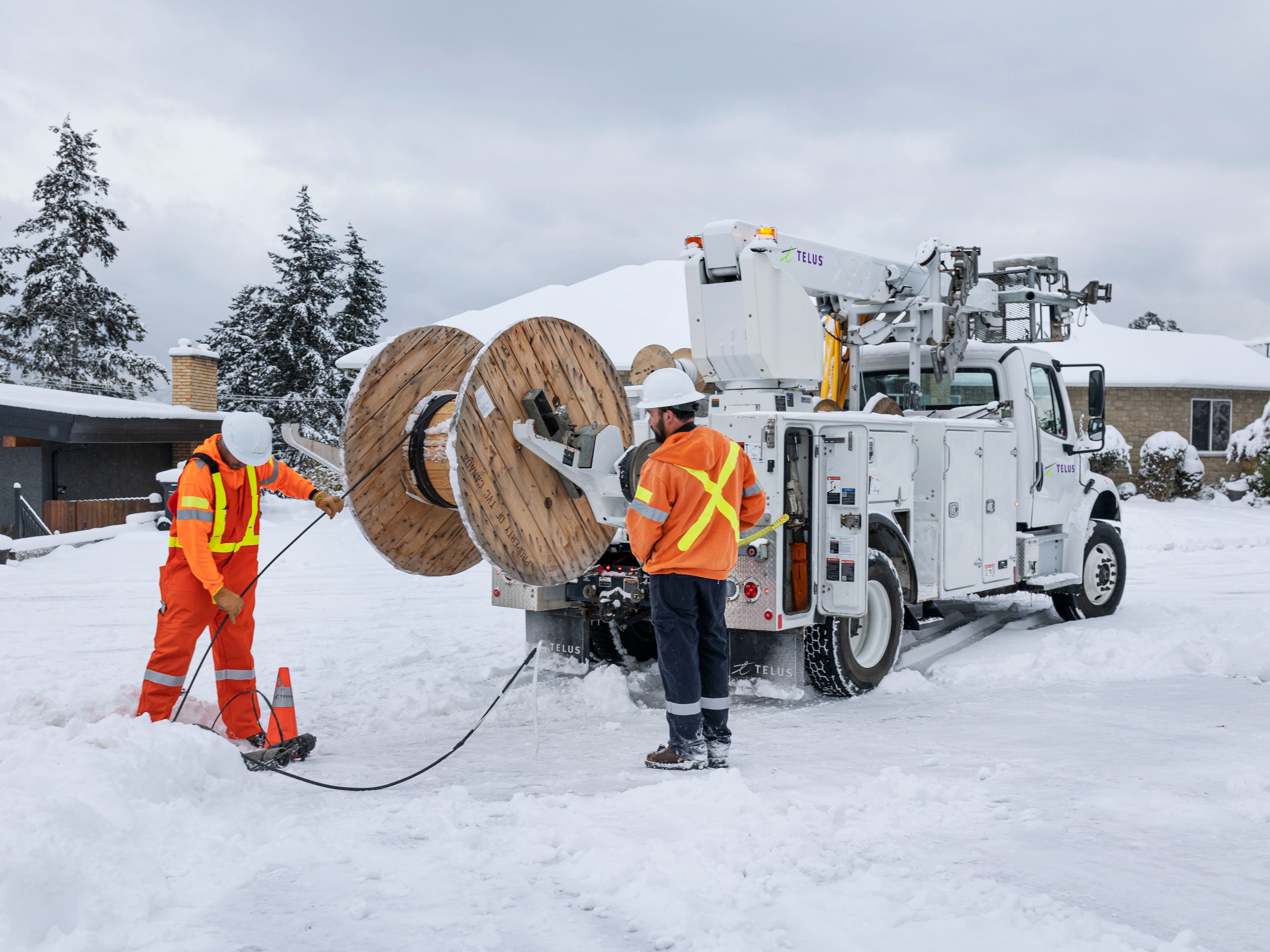
Connecting Canadians
How connectivity enables B.C. First Nations to power up economic, cultural priorities
(Above) PureFibre connectivity at the Williams Lake First Nation means citizens can access to the same gigabit-enabled internet services as readily available in urban centres. PHOTO BY KIRK DRESSLER.
The reality of living in rural and remote communities comes with connectivity challenges for First Nations peoples. Namely, the luxuries of high-speed internet experienced by municipalities and densely populated areas are not always afforded to First Nations communities.
For communities, the impacts of this reality affects everyday business of the First Nations’ administration, governance, and private business at their core – underperforming emails and servers are significant impediments to data-heavy work, such as natural resource and cultural heritage management.
Slow internet also hampers family and community connections – something as simple as a video chat between loved ones is out of reach. It impedes distance learning and remote work, which greatly lessens opportunities for young and old alike. It holds back progress on Indigenous language revitalization efforts, limiting the ability to capture aging fluent speakers or missing connections with the next generation of learners.
Fortunately, First Nations are now increasingly empowered to fully participate in the digital age.
For more than a decade, TELUS has collaborated with Indigenous governments and organizations, as well as federal and provincial governments, to provide connectivity, tools, and resources that support the unique social, economic and governance goals of each community. To date, more than 18,500 homes and businesses across 77 communities are connected to high-speed internet-to-the-premise, 56 of which will be connected to the gigabit-enabled TELUS PureFibre network by the end of 2020.
The importance of this ongoing collaboration can be felt across communities. It means citizens can stay connected, while staying in their home communities -- often a priority for First Nations, as their connections to lands since time immemorial is strong. Living near the landmarks and waterways that are recognized in ancestral oral histories and languages are important to cultural preservation.

For Haisla Nation in northern B.C., fast and reliable connectivity couldn’t come at a better time as the community races to capture and teach Haislakala, the Haisla language. PHOTO BY K. HIYASHI
For Haisla Nation in northern B.C., fast and reliable connectivity couldn’t come at a better time as the community races to capture and teach Haislakala, the Haisla language. With fewer than 85 fluent Haislakala speakers, all between 61 and 98 years old, Haisla urgently needed the tools to support a complex strategic framework necessary to revitalize their Indigenous language.
By leveraging PureFibre, the community now has the bandwidth and data-transfer ability to generate language content themselves, instead of having to rely on others to undertake this work on their behalf. And for those at the centre of the language reclamation efforts, that ability is nothing short of game-changing.
“Haislakala is more than a means of communication, it is a tangible symbol of culture and nation identity that expresses Haisla values, providing a window into the unique worldviews of our people,” says Teresa Windsor, Haisla Community Cultural Coordinator.
For Xatśūll First Nation, located just north of Williams Lake, the arrival of next-generation PureFibre connectivity to Soda Creek and Deep Creek has enabled new growth opportunities for private and community-owned businesses. For Xatśūll Administration, their website and emails are now working optimally, while their citizens are now equipped with internet speeds that foster instant and reliable online connections with family, friends, and colleagues locally and around the world.

For Xatśūll First Nation, located just north of Williams Lake, the arrival of next-generation PureFibre connectivity to Soda Creek and Deep Creek has enabled new growth opportunities for private and community-owned businesses. PHOTO BY MAX WINKELMAN
The same is true for T’exelc, also known as the Williams Lake First Nation, just southeast of Williams Lake. PureFibre connectivity, completed earlier this year, means citizens can access to the same gigabit-enabled internet services as readily available in urban centres, ensuring young people can live and work in the community without compromising opportunity. The network also empowers community leaders to use tech innovation to address their unique social and economic needs, and improve quality of life for their people.
“Accelerated internet speeds is enabling members in the community to strengthen familial bonds over large distances, to reinforce cultural values, become more competitive in the workplace, and building access to modern amenities such as telehealth,” says Chief Willie Sellars.
Government policies have made the digital divide in Canada worse, leaving some rural Canadians without optimal internet. You can help change that.
For Esk’etemc, a rural and semi-remote Secwepemc community in central British Columbia, PureFibre has opened up the world of ecommerce for local artisans and entrepreneurs. They can now quickly upload high-quality photos of an item for sale, such as moccasins and earrings. That means that potential buyers – wherever they may be around the world – can easily admire the craftsmanship and fine details of the beadwork.
“The increased presence on the web to sell our products is huge for our community,” says Neil Paul, Esk’etemc member and Administrative Assistant.
Critically in 2020, the coronavirus pandemic has made reliable network access even more essential to all Canadians. In response, more First Nations have been able to rapidly develop robust digital communications strategies they need to keep members healthy and informed with up-to-date information, while staying safely apart.
“With the pandemic I’m not really sure how things would have played out if we didn’t have strong connectivity. There would have been a lot more in-person interactions which would have posed a risk to our Elders,” says Paul.
More than $25 million has been invested to date to connect Indigenous communities in B.C. to the PureFibre network, including enhanced wireline and wireless connectivity. TELUS partners with Indigenous, federal, provincial, and municipal governments, as well as partners such as the All Nations Trust Company, the Pathways to Technology project, and the First Nations Education Steering Committee to extend life-changing technology into Indigenous communities.

Help support rural Canadian connectivity
Better government policies are needed to help rural Canadians gain access to high speed internet.


